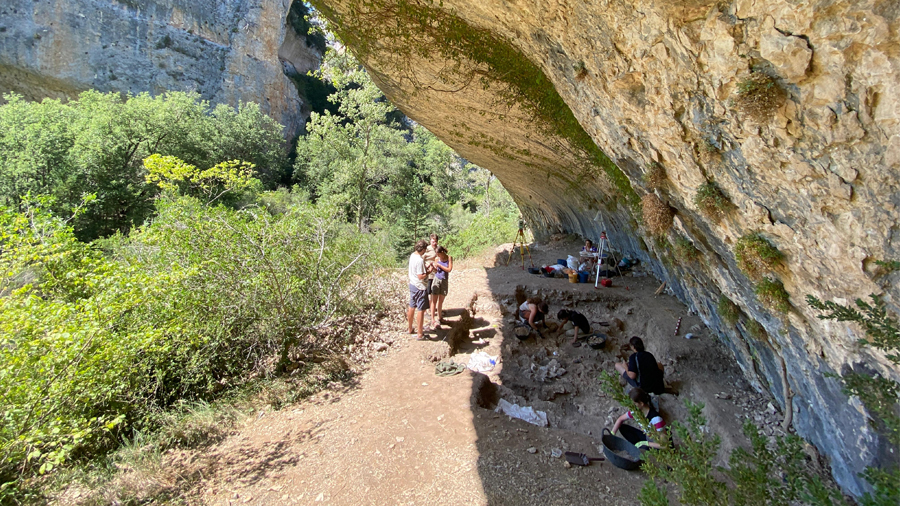New evidence of Neolithic occupations in the Aragonese site of Huerto Raso
Researchers from the UAB and the University of Zaragoza who have carried out the first extensive excavation campaign of the Huerto Raso site (Huesca) have made new discoveries that reinforce the hypothesis of its occupation during the ancient Neolithic, more than 7,000 years ago, and will aid in obtaining a more accurate picture of the daily and subsistence practices of the first agricultural groups of the region.

The Huerto Raso shelter (Colungo-Asque, Huesca) was first discovered more than 50 years ago by Ignacio Barandiarán. Subsequent research, carried out by the Museum of Huesca and the University of Zaragoza, confirmed its occupation in the ancient Neolithic period, more than 7,000 years ago. However, until now only partial surveys had been carried out. This campaign carried out during the month of July was the first extensive dig campaign.
Researchers from the UAB and the University of Zaragoza have documented the seasonal presence of Neolithic groups and possible later occupations. Artifacts discovered include flint tools, ceramics and mills, as well as habitational structures. Bone remains of the animals consumed were also recovered, among which the hunted animals stand out numerically over the domestic ones, and abundant plant residues. The study of these findings will provide a detailed vision of the daily and subsistence practices of the first agricultural communities in the region.
“The site of Huerto Raso is a window to the past that allows us to better understand the development of human societies during the ancient Neolithic in the pre-Pyrenean area,” explains Alejandro Sierra, researcher at the UAB. He directed the dig alongside Marta Alcolea, a Ramón y Cajal researcher at the University of Zaragoza, attached to the University Institute for Research in Environmental Sciences of Aragon (IUCA) of the same university. Both researchers belonging to the group First Settlers and Archaeological Heritage of the Ebro Valley (P3A). Also directing this dig was Rafael Laborda, independent researcher.
The discoveries made are important not only for the academic field, but also enrich the cultural heritage of the region. Located in the heart of the Vero River Cultural Park, it is surrounded by more than fifty sites with post-Paleolithic rock art, declared World Heritage by the UNESCO.
The dig campaign also included the collaboration of local institutions such as the Parque Natural de la Sierra y Cañones de Guara, and the Parque Cultural del Río Vero, as well as the participation of student volunteers from both universities.
With the completion of the field work, the team now faces the phase of analysing the items found, crucial for a deeper understanding of the archaeological context of the site. This phase will include, in addition to the traditional studies of stone and ceramic materials, carbon-14 dating and archaeozoological, archeobotanical and residue analysis of ceramics and mills, to better understand the subsistence strategies of the Neolithic inhabitants.